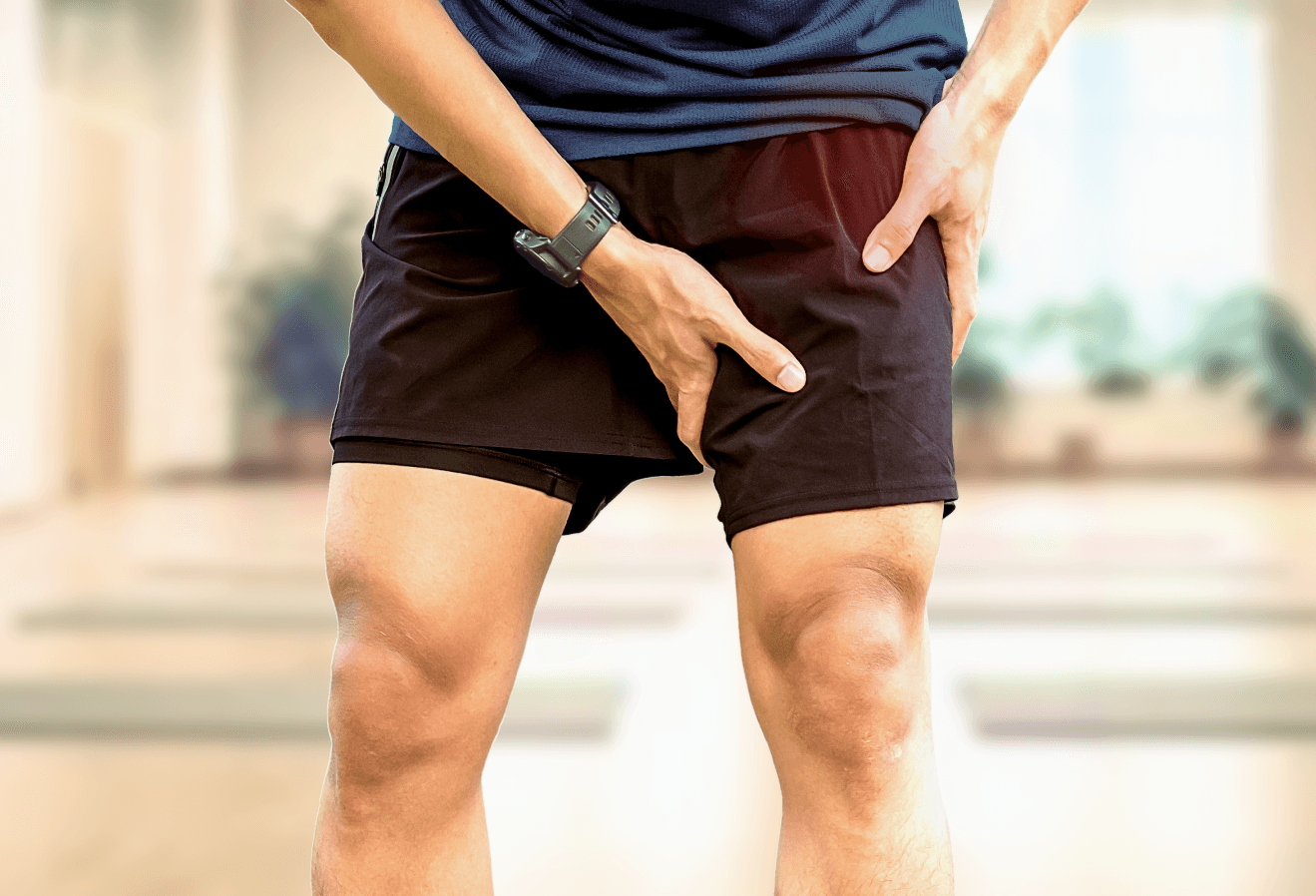Hip Pain
Understanding Hip Pain: A Biomechanical Perspective
The hip is a cornerstone of human movement, providing strength, stability, and a wide range of motion. As a ball-and-socket joint, it bears substantial weight and facilitates critical actions such as walking, running, and lifting. However, hip pain often reflects dysfunctions that extend beyond the joint itself. To achieve lasting relief, it is crucial to explore the broader biomechanical context, including the pelvis, core, and myofascial slings.
The Biomechanics of the Hip
The hip’s ball-and-socket design allows for multi-directional movement and provides both mobility and stability. Surrounding the joint are powerful muscle groups—such as the glute muscles, hip flexors, and adductors—that work together to distribute forces and maintain balance. However, optimal function depends on the alignment and coordination of the entire kinetic chain, from the feet to the shoulders.
The myofascial slings play a vital role in the body's movement and stability. These interconnected networks of muscles and fascia link the hip to other regions, such as the core, shoulders, and feet. For instance, the connection between the gluteus maximus and the contralateral latissimus dorsi is crucial for stabilizing and rotating the pelvis during dynamic movements. Similarly, the feet, as foundational structures, provide crucial feedback and support for these slings, influencing alignment and mechanics throughout the entire kinetic chain. Any dysfunction within these areas can disrupt hip mechanics, resulting in pain and the development of compensatory patterns.
Recurrent Pain and the Importance of Systemic Assessment
Recurrent hip pain often signals underlying issues that go beyond the joint itself. Common factors include:
Weakness in the gluteus medius, a key muscle for lateral pelvic stability, associated with poor supination of the foot, which can result in pelvic drop during gait and increased stress on the hip joint.
Tight hip flexors or hamstrings, due to changes in foot function, alter pelvic alignment and increase strain on the hip and surrounding structures.
Dysfunction in the myofascial slings or core compromise force transfer and leaves the hip vulnerable to excessive loading.
Additionally, trauma such as childbirth can disrupt the pelvic ligaments and musculature, leading to persistent hip instability if not properly rehabilitated. Without addressing these deeper dysfunctions, traditional treatments may provide temporary relief but fail to resolve the root causes, perpetuating the cycle of pain.
Chiropractic Care for Hip Pain
Function-based chiropractic care offers a comprehensive solution for addressing hip pain. In the acute stage, specific adjustments restore joint mobility and alleviate stress on the hip, promoting recovery. However, lasting relief requires a deeper approach that targets the underlying biomechanical imbalances.
Soft tissue therapies play a crucial role in releasing tension in overactive muscles, such as the hip flexors, while activating and strengthening stabilizers like the gluteus medius. These interventions enhance the function of the myofascial slings, improving the hip's ability to distribute forces effectively.
Holistic assessments are integral to this process, identifying compensatory patterns across the kinetic chain, especially in the feet. By addressing dysfunctions in the pelvis, core, and the feet, chiropractic care ensures a more complete and lasting resolution to hip pain.
Preventing Hip Pain through Biomechanics
Preventing hip pain starts with fostering balance and stability across the functional units that support the hips. Strengthening the gluteus medius and posterior oblique sling, through exercises like lateral band walks and single-leg bridges, enhances pelvic control. Stretching tight hip flexors and hamstrings further promotes alignment and flexibility.
Incorporating movement patterns that engage the core and integrate the myofascial slings, such as resisted rotational drills, helps create more efficient mechanics. When combined with chiropractic care, these strategies not only prevent pain but also build a resilient foundation for dynamic and pain-free movement.
Hip related Conditions
Hip Osteoarthritis
Femoral Acetabular Impingement
Trochanteric Bursitis
ITB Syndrome / Snapping Hip Syndrome
Coxa Vara / Coxa Valga Stress
Labral Tear

Utilising various areas of expertise Ed was able to not only manually provide pain relief through adjustments but also give me exercises and movements to do at home to maintain a pain-free state.

